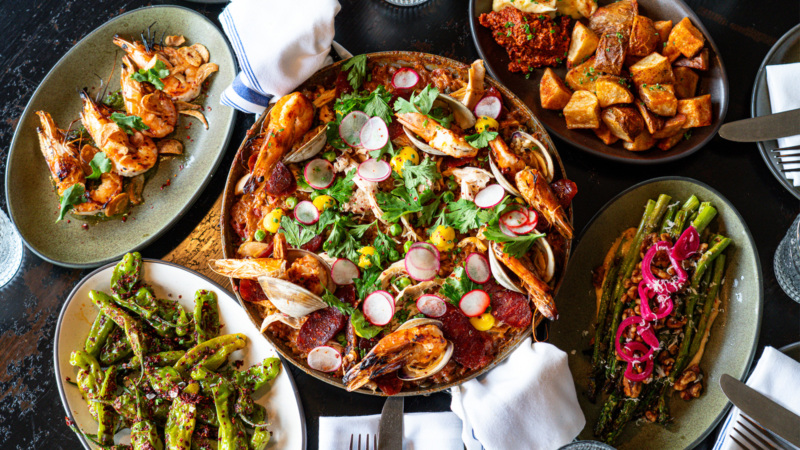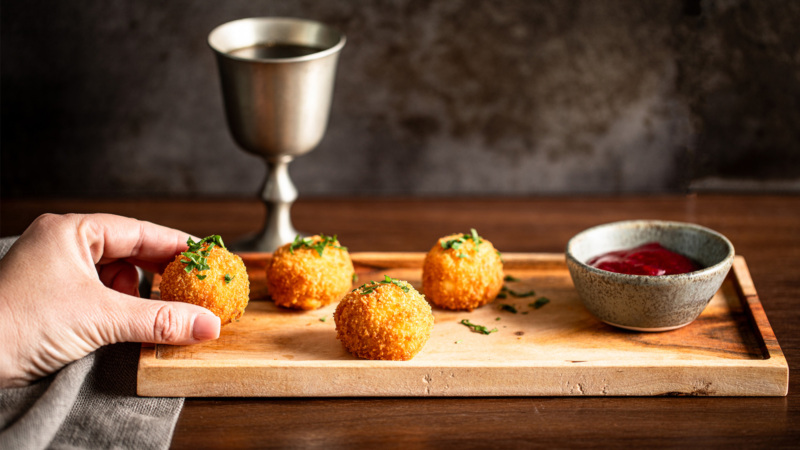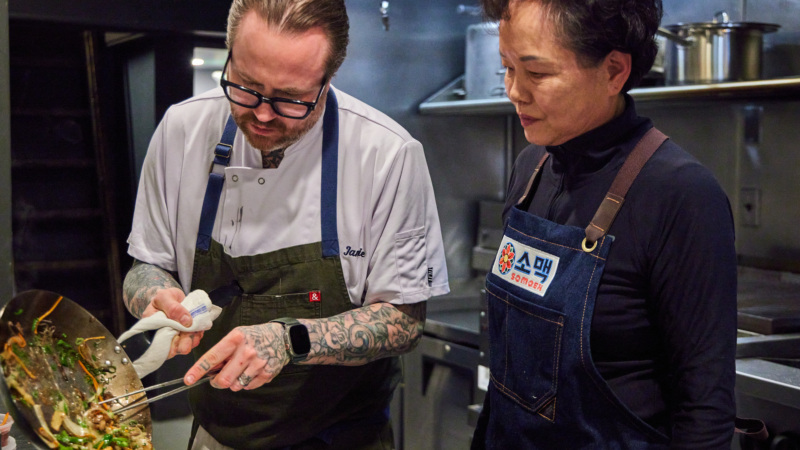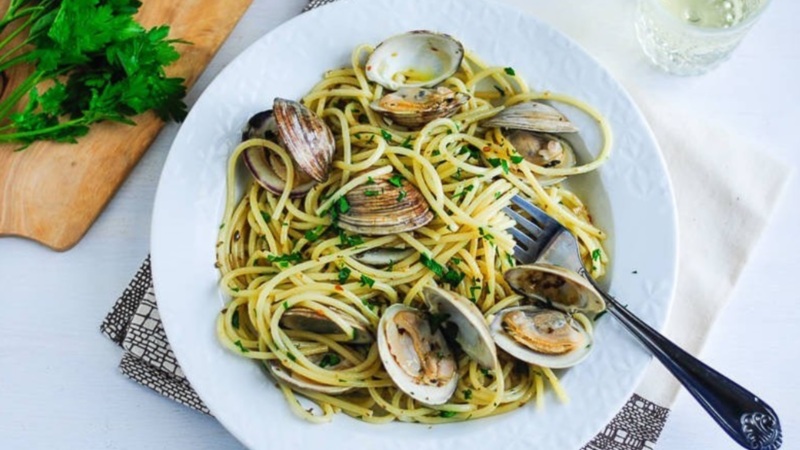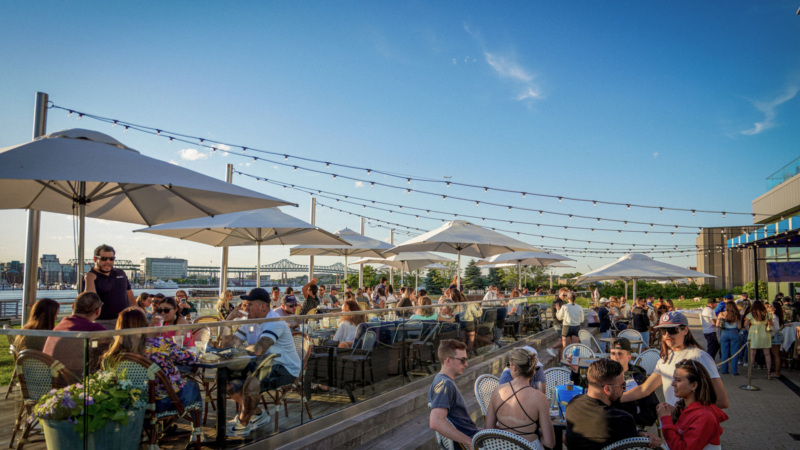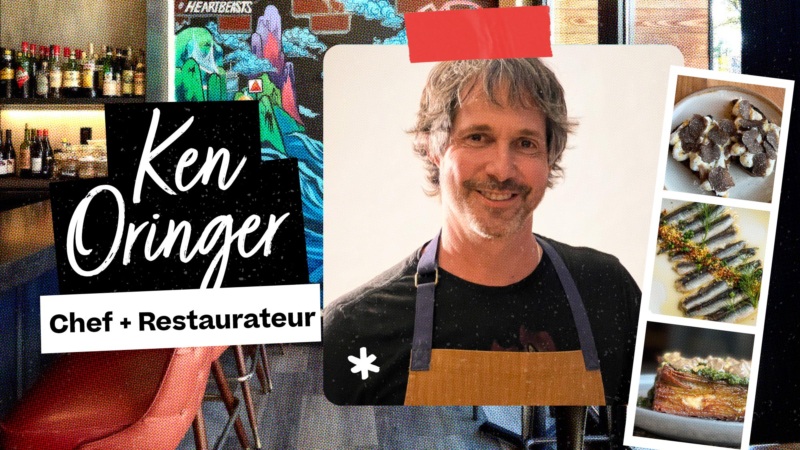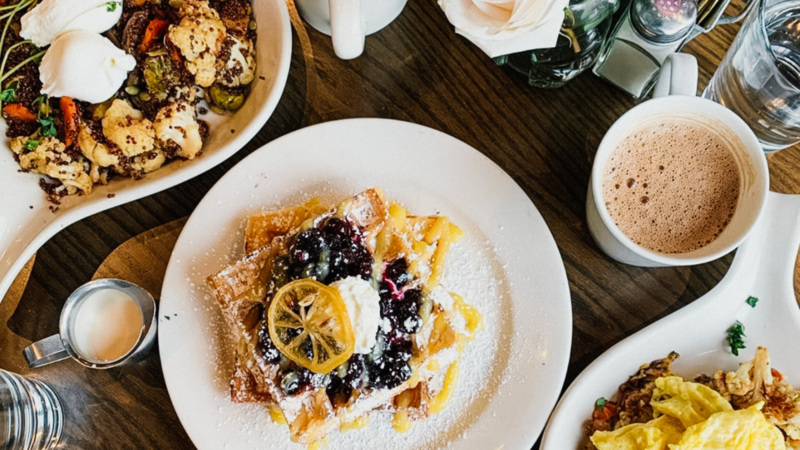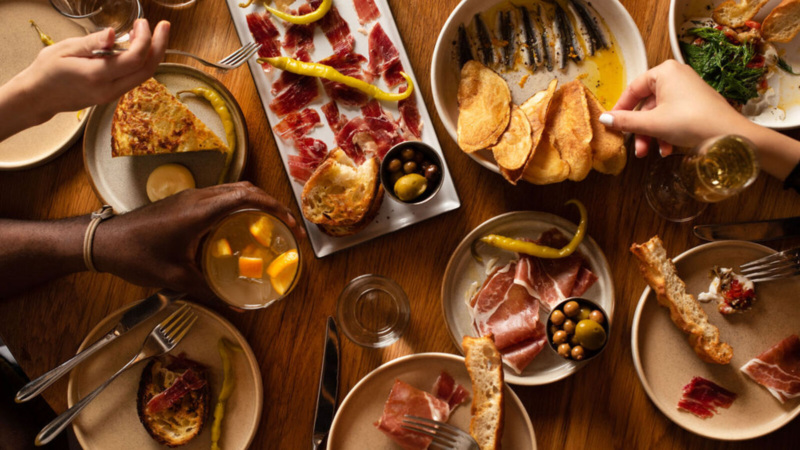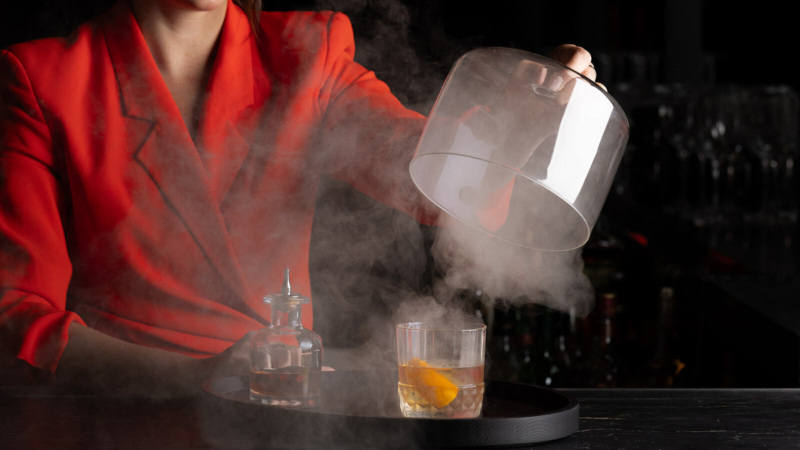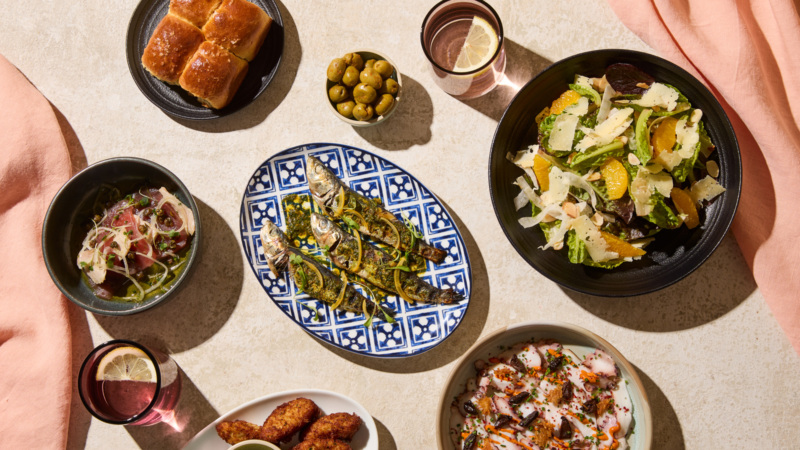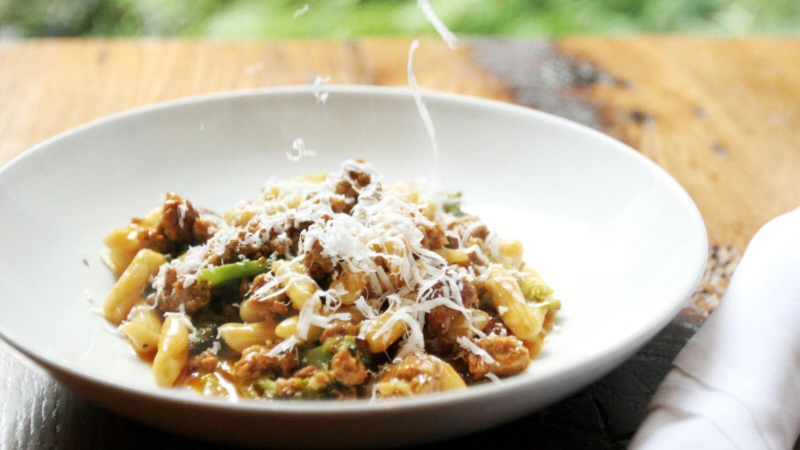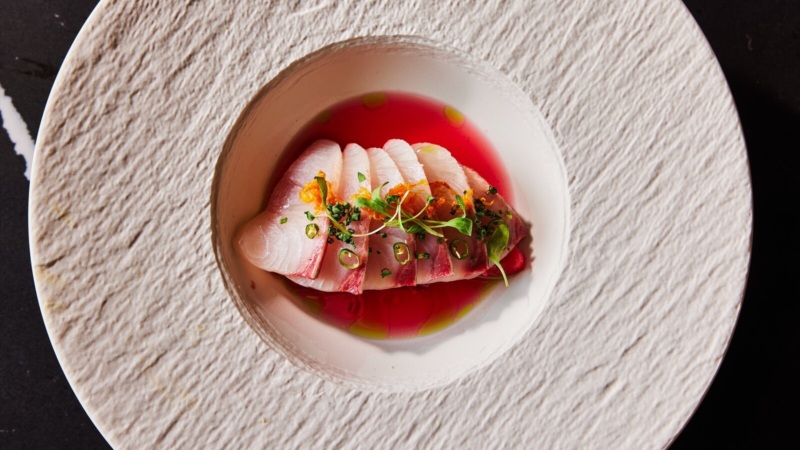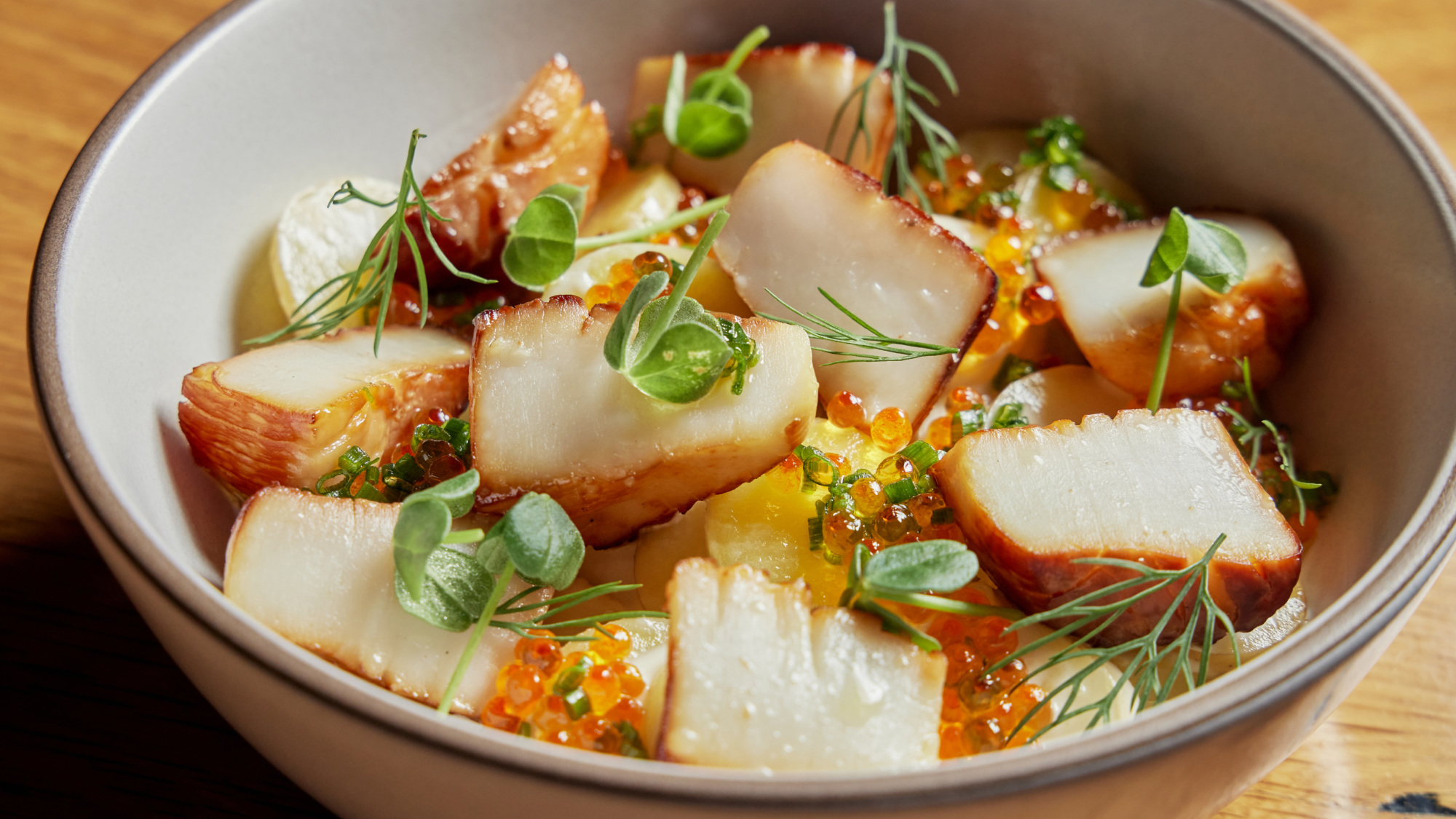
Chickadee’s John DaSilva Is Ready For the Future, Snack Cart and All
Since Chickadee opened in the Seaport District in 2018, locavores and out-of-town visitors alike have flocked to this section of Boston’s waterfront, eager to tuck into plates of pristine seafood and sumptuous pasta created by chef-owner John DaSilva. At the restaurant, located in the Innovation and Design Building, DaSilva turns out dishes that are solidly Mediterranean — a nod to his Sicilian grandmother and Lisbon-born grandfather who worked for years as a fisherman in Gloucester. At the same time, diners know to expect fare that is imaginatively seasoned. DaSilva, formerly the executive chef of Somerville’s Spoke Wine Bar, often uses Middle Eastern spice blends to accent New England ingredients.
Together with beverage director-owner Ted Kilpatrick, DaSilva heads up an energetic team that’s eager to innovate in the new year. Recently, we sat down with him to chat about what’s new and upcoming at Chickadee — and how’s he’s determined to add more fun to the city’s dining roster.
This interview has been lightly edited for length and clarity.
Resy: So here we are in 2023. What’s inspiring you these days?
John DaSilva: The thing that’s inspiring me most as we head into this new year is my staff. I feel like the vibe at Chickadee is the best it’s ever been. People are excited to come to work every day, excited to be cooking, and excited to share their passion for food with each other. It’s always exciting when chef Faye Prapawicha, a native of Thailand, makes family meal. The way she balances flavors in her sauces is truly inspiring. And when chef de cuisine Alberto Cortez, who grew up in Mexico City, makes us tacos, you can taste the love in every bite. I want to reward the chefs and give them an opportunity to be heard, and to collaborate on new menus. I can’t wait to let their voices be heard.
You made a big change last year, letting go of lunch service to focus on dinner. How did you make that decision?
So that was a really hard decision. We were really proud of the lunch we were doing at Chickadee, and I’ve got to give a lot of credit to our landlord, Jamestown. They helped us to build the place, and brought us in to be a kind of community center for the Innovation and Design Building. We had a very frank conversation with them, and were like, “Staffing is hard right now, lunch is great and we’re proud of it, but the dollars are not coming in as fast as they are going out with lunch, and so we would really love to focus all of our efforts on dinner.” And they were amenable to it. We’re just having so much fun with food at night, excited about the snack cart we’re going to be rolling out.
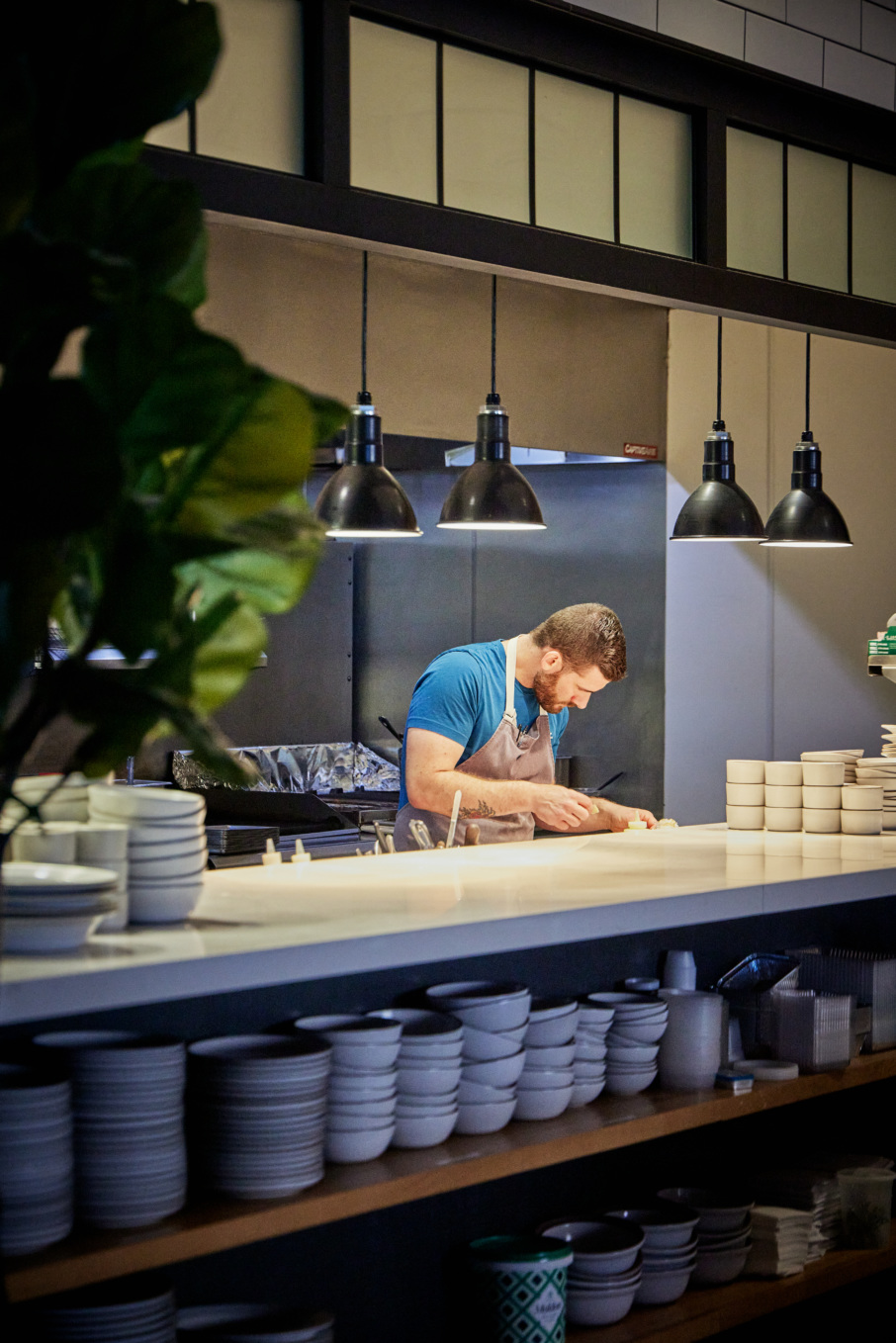
A snack cart! Sounds intriguing. Say more about that.
Even before we opened the restaurant, I had wanted to do a dim-sum style snack cart, kind of in the vein of a State Bird Provisions [in San Francisco] or how Sarma does their tray service. Now, we have this beautiful cart, built and ready to go. We’ve been making sure everyone is comfortable with a cart moving around the room.
When will you roll out that out, and what will be on it?
So we’re looking forward to bringing that out in March. The seasons will dictate what we’re putting on the cart in any given month. Beautiful local shellfish and seafood will always dominate what’s on it, no matter the season. As we enter the spring time, we look forward to showcasing things that are more fleeting and of-the-moment in really creative ways. Things like ramps, wild mushrooms, stinging nettles, and whatever else our local farmers, foragers and fisherman show up with. One of the chefs or managers will be doling out [the dishes], enticing the guests as we roll through the dining room.
The snack cart will require face-to-face interaction — more than was possible during the height of the pandemic. What’s your thought process behind its debut?
At this point, it’s still just wishful thinking, right? Who knows what’s going to happen? We all went through that [pandemic] trauma together, and we’re always going to have that in the back of our minds, but I think it really does feel like we’ve turned a corner. I think people’s comfort level is a little bit higher. Hopefully, people make the right choice — getting the vaccine and getting boosted — so we can all feel comfortable dining out and doing fun stuff like this again. I love Boston, it’s my home, but we are severely lacking for fun stuff.
The crispy fried chicken is definitely fun. You first offered it as takeout, right?
The first iteration was, “Now we have to put food in boxes, and put a lid on it. What do you like to eat out of a box? Let’s make fried chicken, and make it really crispy, and then spice it the way we would spice it.” There’s harissa spice, and there’s labneh ranch, and an ever-changing salad or something to go along with it. So it was really fun. It was something we were really proud of, spoken or sung in our voice. Now it’s a dish we cannot take off the menu.
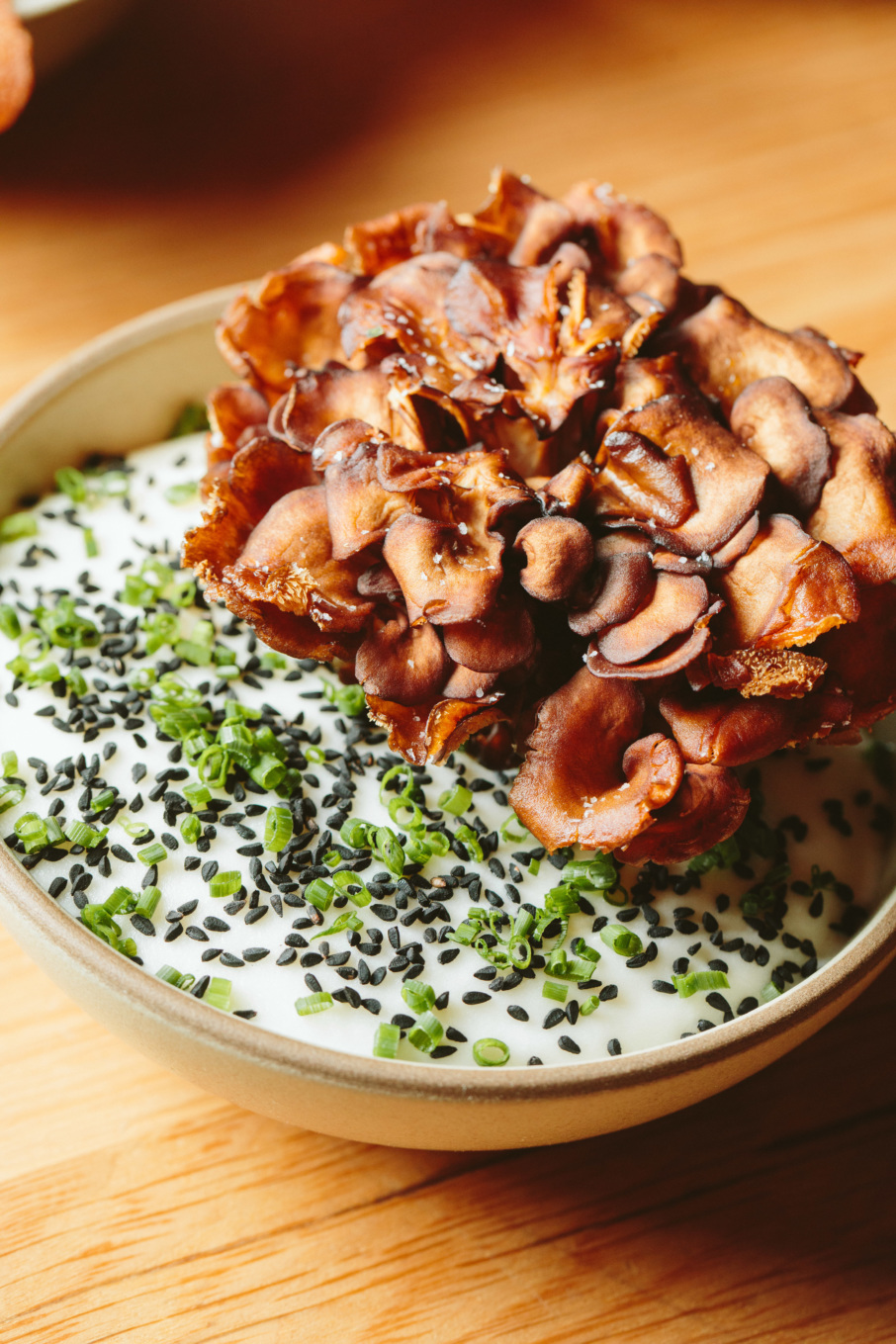

Which dishes have real staying power on the menu?
There are a couple: The Squid Ink Fusilli is one. So we’re making fusilli in-house, seasoning it with squid ink so it’s bright black — a beautiful pasta. And there’s diced soppressata: we render it, get it nice and crispy, and then make a harissa-tomato butter, some thinly sliced squid, some Sun Gold tomatoes when they are in season, and then we toss it with ink-and-olive bread crumbs, So it’s briny, porky, a little bit spicy, and comforting with a little bit of texture. Everybody loves it.
Another one is probably the simplest thing on our menu: It’s the crispy hen of the woods, locally foraged when we can get them. So we make a potato and almond skordalia — it’s got lots of garlic and lemon in it — and we hit it with some cream, and charge it with some carbon dioxide, so it’s super airy. And then I’ve always loved the combination of toasted nigella seeds with earthy and creamy things. So it seemed like a no-brainer to do the nigella seeds with the skordalia and some chives. I have a lot of industry people ask, “Is that back on the menu?” Because it came off for a little bit, but now it’s back to stay.
What’s the story behind the Peekytoe crab toast?
My friend, Eric Frier — a little shout-out to him — was the chef at Spoke after me, and [until recently, worked] for Rocky Neck Fish Co., our seafood purveyor. One week he was like, “We have some green crabs — they’re an invasive species, by-catch. You’re not going to get any meat out of them, but they’re great for making stock.” Instantly, when chefs talk about food, wheels start turning, and I’m like, “I can make a really great crab oil out of them.” And so I emulsify that [crab] oil, make an aioli, dress the Jonah crab with crème fraîche, and serve it over some grilled bread from Seven Stars Bakery. Then on the bottom of the plate, there’s my all-time-favorite condiment, zhoug — basically like a green harissa. It’s a super-bright refreshing sauce. Then a bunch of different herbs on the top — mint, cilantro, basil. The bread is crunchy, and it soaks up the green crab aioli. It all melts together in the best possible way. And a little heat from the jalapeño.
“Eat it to beat it” is a great approach to take toward an invasive species.
I want to support fishermen, and I want to do my part. So it works well for everybody. I get delicious, cheap crabs out of the deal, and they get to make money off the crabs that are eating the stuff the fishermen want to sell. They’re definitely frisky little things — they’re not afraid of me.
Any favorites on the menu that you crave on your day off?
Lobster Campanelle, which is essentially like fra diavolo. We put lobster roe in the pasta, so it turns bright red, and make this really delicious sauce Américaine. We toss in some lobster [meat], Calabrian chile oil, chiles, crispy garlic, and chives, and people go nuts for it. That’s one of my favorites. That’s what I would get if I were coming in.
On days that throw big challenges your way, what keeps you on track?
I like the Larry Bird quote, which I think is, “I hate losing more than I like winning.” So, I will do anything to not fail. I’ll do whatever it takes. I want to make the people happy, and create beautiful food that makes people think — food that’s a little bit provocative and fun.
Ellen Bhang is a Boston-based food and wine writer whose work appears regularly in The Boston Globe and The Food Lens. Follow her on Instagram. Follow Resy, too.
Brian Samuels is an acclaimed editorial food and beverage photographer. Connect with him at Brian Samuels Photography


